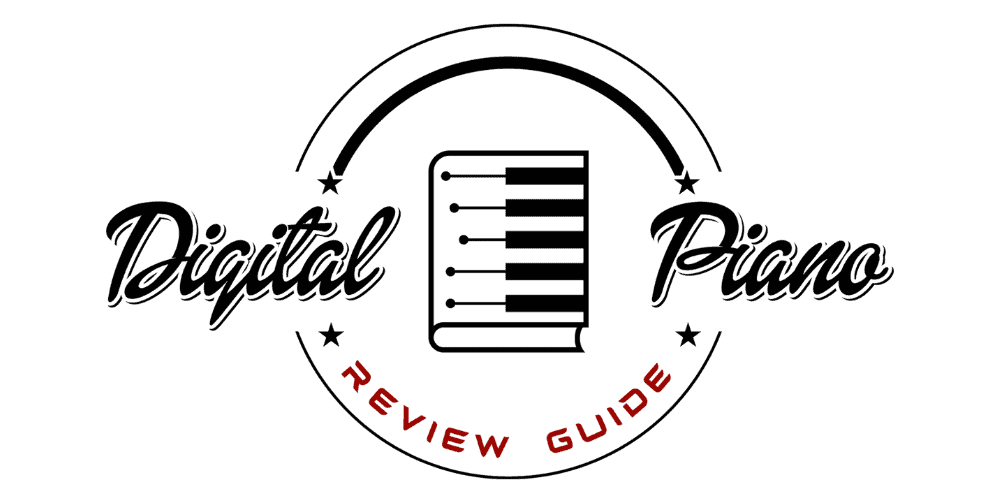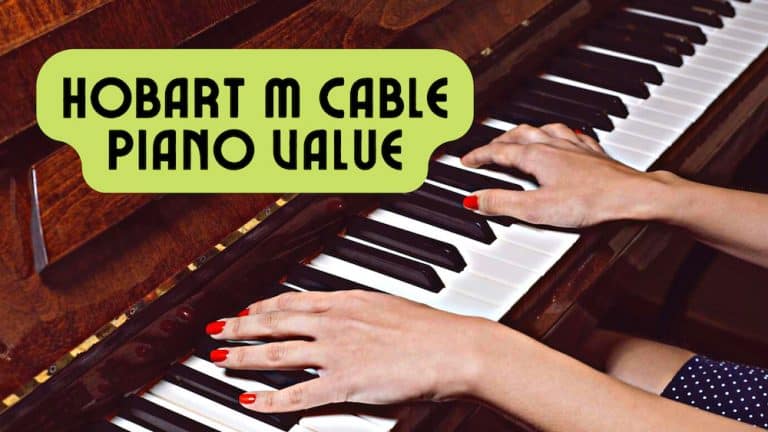Chickering Piano Value – What’s a Chickering Piano Worth?

Chickering pianos are some of the oldest pianos still in circulation, and was one of the most popular instruments in any 19th century American home. But what is a Chickering piano’s true worth? Well, in this article, we’re going to put this question under the microscope, as we aim to determine in this Chickering piano value article.
Chickering Piano Value and History
Chickering pianos specifically have a rich history in the United States, but many of them are quite old. The company was established in Boston, Massachusetts in 1823. The business boomed for quite some time, and there is no doubt that hundreds, if not thousands, of their pianos are still in circulation or sitting in someone’s home.
Their value may be quite low if no work has been done, but restored Chickering pianos can sell for a great deal of money. The price is further dependent on the product itself. Their most popular piano was the square grand piano, and came in different forms— Victorian, Empire Style, Rosewood Victorian, Rococo style, and several more..
While the words “antique” or “vintage” can assign more weight to a product, it unfortunately works against you with most pianos, unless they’ve been restored (restoration is a process that returns a piano to its original look and functionality, as if it was brand new—but is often very expensive).
While an 1876 piano from Chickering may sell online for $100, another upright Chickering piano from the 1800s could sell for $1,100. While the former obviously needs more work than the latter from the pictures, it really does depend on the quality of your piano (and how ambitious you’re willing to be with the starting price).
From the research I’ve done across multiple products under the Chickering brand name, I’d say you’re looking at an average price of about $600 for a functioning Chickering piano. Cosmetic damage notwithstanding, if everything functional is intact and it can be played (and the tone is alright), you could probably sell for it for a bit more.
Although there are several distinct Chickering products, they’re mostly all square grand pianos, so they’re all going to be around the same price (a baby grand will be a few hundred less, though).
What Affects the Value of a Piano?

If you’re familiar with cars, you’ve probably heard about the concept of depreciation—this is when, after something has been purchased and is in the hands of its new owner, the value automatically goes down, even if no real damage has been accrued. General wear and tear and regular use can also contribute to regular depreciation, as can age, significant damage, and the brand itself.
Although the concept of depreciation is similar between cars and pianos, for pianos, it’s not as immediate. A piano can remain in very good condition for a long time before it begins to depreciate—as long as it’s well taken care of and regularly tuned.
However, time will eventually take its toll. The current market value of a piano can also affect its price, but that doesn’t have as much as an impact as the other factors.
The condition of the piano is also a big factor. Although there are different types of damage, any of them can lower your piano’s overall value. Cosmetic damage—that is, damage that really only affects the appearance of the piano—may not be nearly as costly to the overall value as damage to the actual mechanisms that create the sound.
Some examples of severe damage may be missing keys, broken or aged strings, sticky piano keys, large gouges in the wood, broken or missing pedals, or other problems that affect the sound.

Additionally, the age of the piano can affect its value too. Depreciation is rooted in the concept that as an object ages, its functional parts and mechanisms will inherently become worse for wear as time passes.
The age of a piano can be found by locating the serial number (whose locations differs depending on the brand) and using a website directory to find the age, manufacturing details, and more. Here’s a link to help you find the information connected to your specific piano.
- You Might Also Like: How to Assess a Wurlitzer Piano’s Value
Should I Get An Appraisal?
The answer is maybe.
If you’re unfamiliar with appraisals, it’s just like any other evaluation—a professional pianist or piano technician will look over your piano and give you a rough estimate of what it’s worth, usually in your own home so you don’t have to move the piano. Often, this service is free or is offered at a low cost, but they usually give reliable information.
The issue comes if the one appraising your piano is a potential buyer. Obviously I can’t speak for every appraiser in the industry, but people have had good and bad experiences, just as in anything else. If you’d like to have your piano professionally appraised, I think that’s an excellent option. It’s my strong recommendation to do two things first:
1) Go into the appraisal having already done your own research so you know what to expect.
2) If you’re not confident in your own research, have the piano appraised by someone with good reviews—and someone that does not have an interest in buying the piano.
Unfortunately, if your appraiser is your buyer, he or she may try to lowball you to reduce the amount they have to pay.
For those of you who are new to this world, just one quick note—an appraiser is not a tuner. A tuner is someone who actively works on the strings and hammers of your piano to restore the tone to its intended pitch, if it’s out of tune. I would definitely recommend having your piano professionally tuned before you sell—it may be a little expensive, but an out of tune piano will almost definitely turn off several buyers if they want to try it out before purchasing it.
Conclusion
Although a Chickering piano value can change with several factors, the bottom line is that they’re illustrious instruments regardless of their worth. They were the pioneering manufacturers of pianos in America, and even if there aren’t many left in good condition, there’s absolutely no doubt that owning one of these is owning a little piece of history!
Frequently Asked Questions
This article was written by Isabelle.






